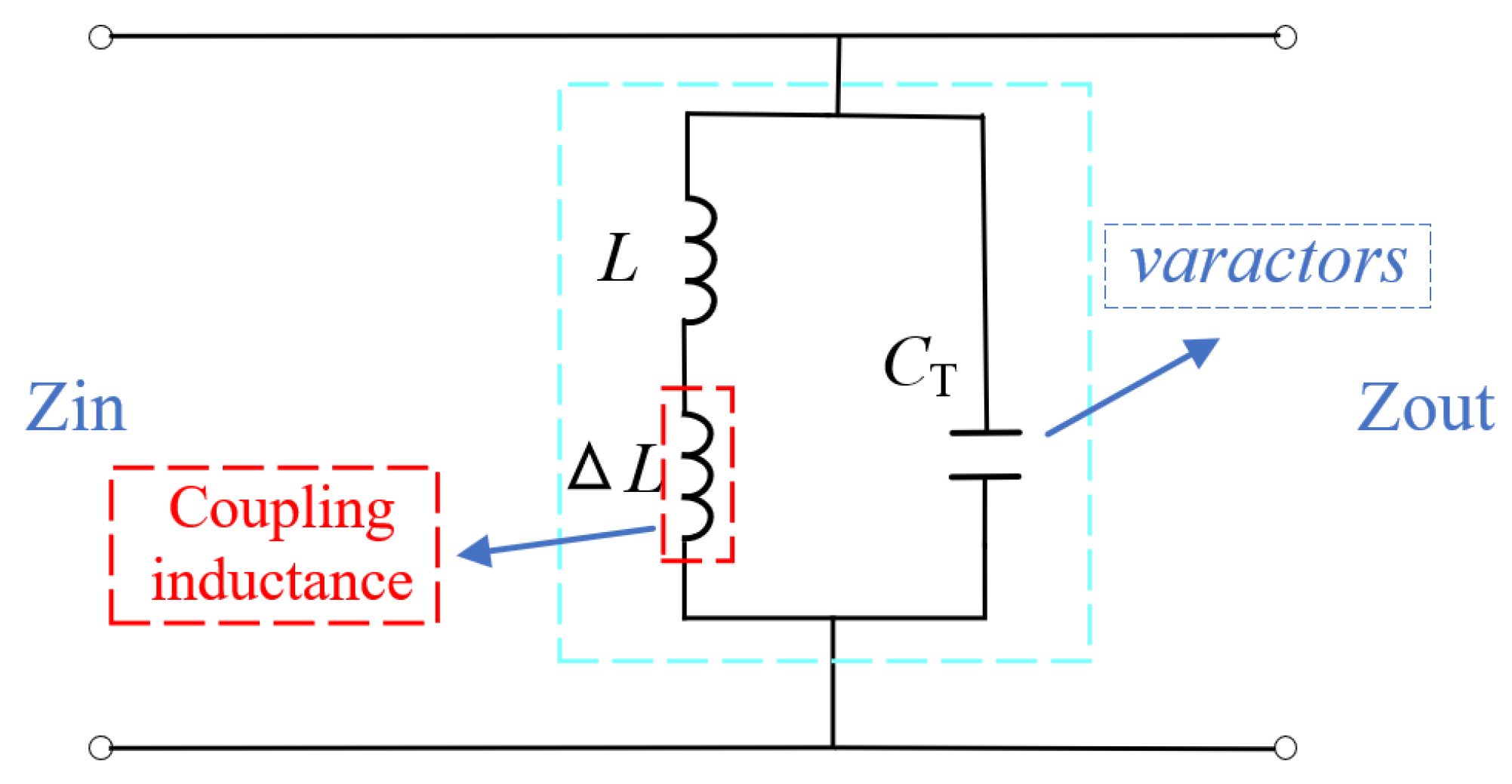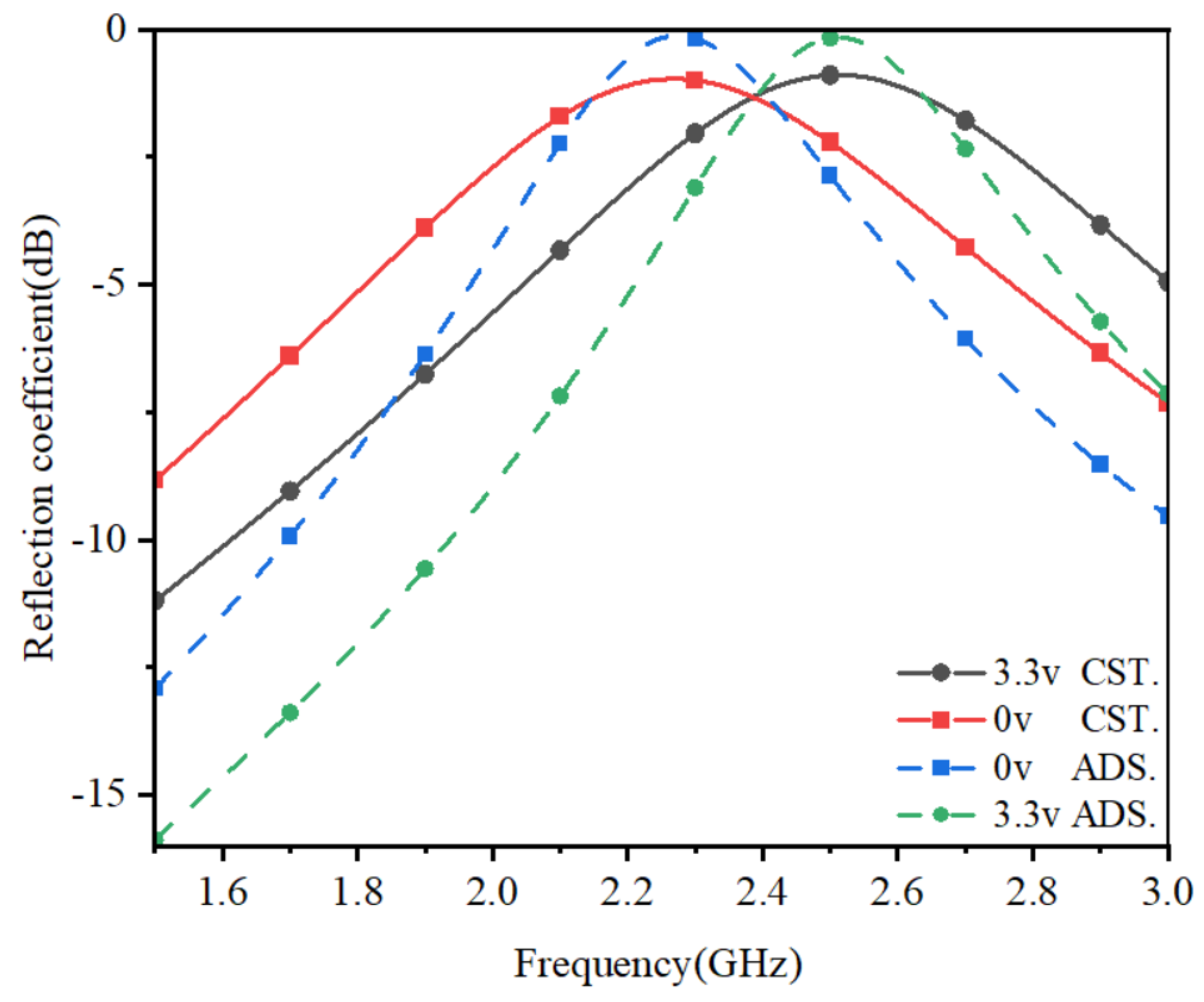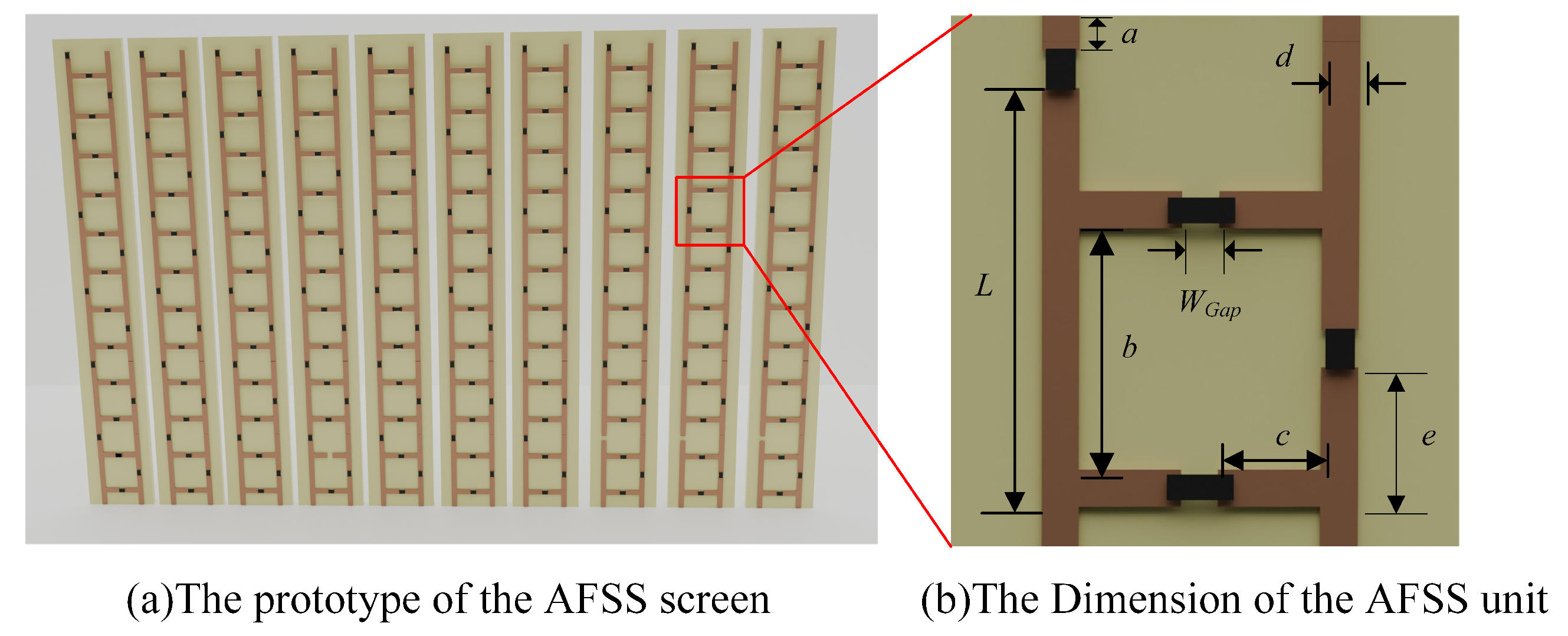Miniaturized Active-Frequency Selective Surfaces for Low-Power Internet of Things Devices
Abstract
:1. Introduction
2. Design and Analysis
3. Simulation Validation and Analysis
4. Experiment Verification
4.1. Fabrication and Experiment
4.2. Sample Measurement Results
4.3. Performance Comparison
5. Conclusions
Author Contributions
Funding
Data Availability Statement
Conflicts of Interest
References
- Wang, L.; Shi, H.; Chen, X.; Qu, B.; Yi, J.; Zhang, A.; Xu, Z.; Liu, H. Multibeam Metasurface Antenna Enabled by Orbital Angular Momentum Demultiplexing Feeding for IoT Communication. IEEE Internet Things J. 2023, 10, 16169–16182. [Google Scholar] [CrossRef]
- Xu, Y.; Gui, G. Optimal Resource Allocation for Wireless Powered Multi-Carrier Backscatter Communication Networks. IEEE Wirel. Commun. Lett. 2020, 9, 1191–1195. [Google Scholar] [CrossRef]
- Liang, T.; Pan, Y.; Dong, Y. Miniaturized Pattern-Reconfigurable Multimode Antennas with Continuous Beam-Steering Capability. IEEE Trans. Antennas Propag. 2023, 71, 4704–4713. [Google Scholar] [CrossRef]
- Rana, B.; Cho, S.-S.; Hong, I.-P. Parameters and Measurement Techniques of Reconfigurable Intelligent Surfaces. Micromachines 2022, 13, 1841. [Google Scholar] [CrossRef] [PubMed]
- Matos, R.; Pala, N. A Review of Phase-Change Materials and Their Potential for Reconfigurable Intelligent Surfaces. Micromachines 2023, 14, 1259. [Google Scholar] [CrossRef] [PubMed]
- Khalilzadegan, A.; Malekara, A.; Ghobadi, C.; Nourinia, J.; Damya, A. FPGA-Controlled Dual-Band Multifunctional Active Frequency Selective Surface. IEEE Antennas Wirel. Propag. Lett. 2024, 23, 329–333. [Google Scholar] [CrossRef]
- Zhang, L.-M.; Ding, X.; Shao, W. A Multifunctional Active Frequency Selective Surface with Scattering Diffusivity and Transmission Passband Tunability. IEEE Antennas Wirel. Propag. Lett. 2024, 23, 229–233. [Google Scholar] [CrossRef]
- Chettri, L.; Bera, R. A Comprehensive Survey on Internet of Things (IoT) Toward 5G Wireless Systems. IEEE Internet Things J. 2020, 7, 16–32. [Google Scholar] [CrossRef]
- Gao, C.; Yang, B.; Jiang, X.; Inamura, H.; Fukushi, M. Covert Communication in Relay-Assisted IoT Systems. IEEE Internet Things J. 2021, 8, 6313–6323. [Google Scholar] [CrossRef]
- Yuan, H.; Li, H.; Fang, X.; Wang, Y.; Cao, Q. Active Frequency Selective Surface Absorber with Point-to-Point Biasing Control System. IEEE Antennas Wirel. Propag. Lett. 2021, 20, 1429–1432. [Google Scholar] [CrossRef]
- Li, J.; Zeng, Q.; Liu, R.; Denidni, T.A. A Compact Dual-Band Beam-Sweeping Antenna Based on Active Frequency Selective Surfaces. IEEE Trans. Antennas Propag. 2017, 65, 1542–1549. [Google Scholar] [CrossRef]
- Wang, M.; Xiang, Z.; Li, Y.; Xu, B.; Yang, L. A Quad-Band Highly Selective Frequency Selective Surface with Ultra-Wideband Rejection. Micromachines 2024, 15, 126. [Google Scholar] [CrossRef] [PubMed]
- Wang, J.; Feng, D.; Kong, Y.; Quan, S.; Xing, S. Imaging Properties of Nonperiodic Time-Varying Active Frequency Selective Surface. IEEE Trans. Antennas Propag. 2022, 70, 5884–5891. [Google Scholar] [CrossRef]
- Zhao, R.; Gong, B.; Xiao, F.; He, C.; Zhu, W. Circuit Model Analysis of Switchable Perfect Absorption/Reflection in an Active Frequency Selective Surface. IEEE Access 2019, 7, 55518–55523. [Google Scholar] [CrossRef]
- Liang, J.; Cao, Q.; Wang, Y.; Wan, Z. A Multifunctional and Miniaturized Flexible Active Frequency Selective Surface. IEEE Antennas Wirel. Propag. Lett. 2021, 20, 2549–2553. [Google Scholar] [CrossRef]
- Park, B.; Kwon, K. 2.4-GHz Bluetooth Low Energy Receiver Employing New Quadrature Low-Noise Amplifier for Low-Power Low-Voltage IoT Applications. IEEE Trans. Microw. Theory Tech. 2021, 69, 1887–1895. [Google Scholar] [CrossRef]
- Zhang, L.; Zhang, S.; Liu, Y.; Liu, Q.H. Broadband Tunable Frequency Selective Surface for Steerable Antenna Applications. IEEE Trans. Antennas Propag. 2016, 64, 5496–5500. [Google Scholar] [CrossRef]
- Zhang, H.; Yao, J.; Kou, B. Initial Resonant Current Control for Extra-LC Auxiliary Resonant Snubber Soft-Switching Inverter without Filter Inductor Current Sensor. IEEE Access 2019, 7, 149237–149244. [Google Scholar] [CrossRef]
- Griffin, J.D.; Durgin, G.D. Complete Link Budgets for Backscatter-Radio and RFID Systems. IEEE Antennas Propag. Mag. 2009, 51, 11–25. [Google Scholar] [CrossRef]
- Lewandowski, A.; Wiatr, W.; Gu, D.; Orloff, N.D.; Booth, J. A Multireflect-Thru Method of Vector Network Analyzer Calibration. IEEE Trans. Microw. Theory Tech. 2017, 65, 905–915. [Google Scholar] [CrossRef]
- Phon, R.; Ghosh, S.; Lim, S. Active Frequency Selective Surface to Switch Between Absorption and Transmission Band with Additional Frequency Tuning Capability. IEEE Trans. Antennas Propag. 2019, 67, 6059–6067. [Google Scholar] [CrossRef]
- Guo, Q.; Li, Z.; Su, J.; Song, J.; Yang, L.Y. Active Frequency Selective Surface with Wide Reconfigurable Passband. IEEE Access 2019, 7, 38348–38355. [Google Scholar] [CrossRef]
- Li, H.; Cao, Q.; Liu, L.; Wang, Y. An Improved Multifunctional Active Frequency Selective Surface. IEEE Trans. Antennas Propag. 2018, 66, 1854–1862. [Google Scholar] [CrossRef]






| Ref. | Unit Size | AFSS Array | Frequency (GHz) | Voltage (V) | Total Power Consumption |
|---|---|---|---|---|---|
| [21] | 12.5 × 12.2 mm | 16 × 16 | 2.92 to 5.74 | 4–18 | 1.0368 mW |
| [22] | 17.5 × 17.5 mm | 16 × 16 | 4.56 to 5.16 | 0–20 | 0.77 mW |
| [23] | 10 × 10 mm | 17 × 17 | 3.7 to 4.27 | 0–20 | 1.17045 mW |
| This paper | 5.5 × 5.6 mm | 6 × 10 | 2.27 to 2.5 | 0–3.3 | 237.6 nW |
Disclaimer/Publisher’s Note: The statements, opinions and data contained in all publications are solely those of the individual author(s) and contributor(s) and not of MDPI and/or the editor(s). MDPI and/or the editor(s) disclaim responsibility for any injury to people or property resulting from any ideas, methods, instructions or products referred to in the content. |
© 2024 by the authors. Licensee MDPI, Basel, Switzerland. This article is an open access article distributed under the terms and conditions of the Creative Commons Attribution (CC BY) license (https://creativecommons.org/licenses/by/4.0/).
Share and Cite
Zhang, L.; Yang, H.; Wang, Y.; Zhang, S.; Ding, T. Miniaturized Active-Frequency Selective Surfaces for Low-Power Internet of Things Devices. Micromachines 2024, 15, 736. https://doi.org/10.3390/mi15060736
Zhang L, Yang H, Wang Y, Zhang S, Ding T. Miniaturized Active-Frequency Selective Surfaces for Low-Power Internet of Things Devices. Micromachines. 2024; 15(6):736. https://doi.org/10.3390/mi15060736
Chicago/Turabian StyleZhang, Liang, Haobin Yang, Yan Wang, Shaoqing Zhang, and Tongyu Ding. 2024. "Miniaturized Active-Frequency Selective Surfaces for Low-Power Internet of Things Devices" Micromachines 15, no. 6: 736. https://doi.org/10.3390/mi15060736





